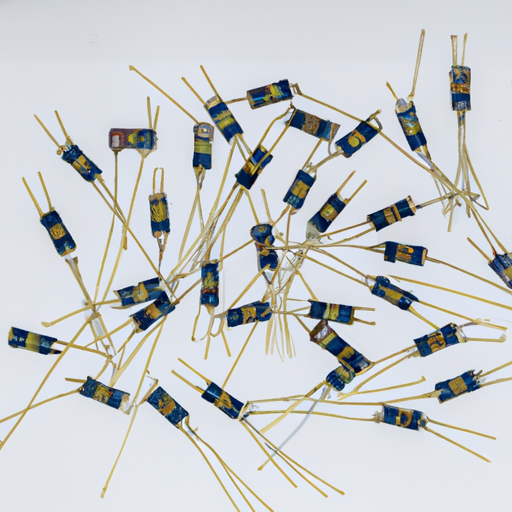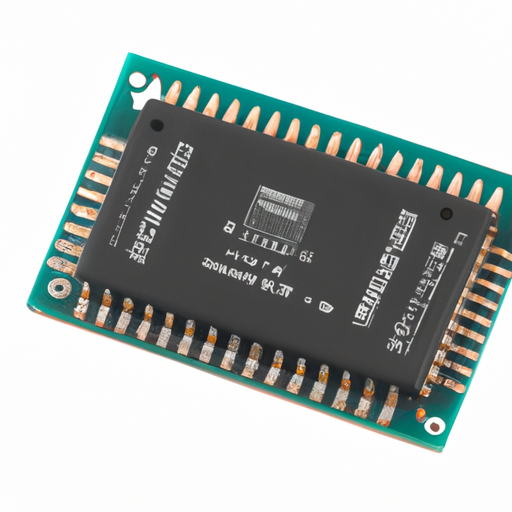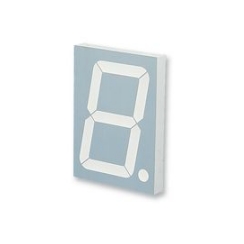What are the popular models of resistors and resistors?
What are the Popular Models of Resistors and Resistor Types
I. Introduction
Resistors are fundamental components in electronic circuits, serving the crucial role of controlling the flow of electric current. By providing resistance, they help to manage voltage levels, protect sensitive components, and ensure that circuits function as intended. This article will explore the various types of resistors, their characteristics, and popular models, providing a comprehensive understanding of these essential components in electronics.
II. Basic Concepts of Resistors
A. What is Resistance?
Resistance is a measure of the opposition to the flow of electric current in a circuit. It is quantified in ohms (Ω) and is a fundamental property of materials. The higher the resistance, the less current will flow for a given voltage.
B. Ohm's Law
Ohm's Law is a key principle in electronics that relates voltage (V), current (I), and resistance (R) in a circuit. It is expressed as:
\[ V = I \times R \]
This equation illustrates that the voltage across a resistor is directly proportional to the current flowing through it, with the resistance acting as the proportionality constant.
C. Types of Resistors Based on Functionality
Resistors can be categorized based on their functionality into two main types: fixed resistors, which have a constant resistance value, and variable resistors, which allow for adjustable resistance.
III. Common Types of Resistors
A. Fixed Resistors
Fixed resistors maintain a constant resistance value and are widely used in various applications. Some common types include:
1. **Carbon Composition Resistors**: Made from a mixture of carbon and a binding material, these resistors are known for their high energy absorption and are often used in applications requiring high pulse loads.
2. **Metal Film Resistors**: These resistors are made by depositing a thin layer of metal onto a ceramic substrate. They offer high precision and stability, making them suitable for applications in audio equipment and precision circuits.
3. **Carbon Film Resistors**: Similar to metal film resistors, carbon film resistors are made by depositing a thin layer of carbon. They provide better performance than carbon composition resistors and are commonly used in general-purpose applications.
4. **Wirewound Resistors**: Constructed by winding a metal wire around a ceramic or fiberglass core, wirewound resistors can handle high power levels and are often used in power supplies and industrial applications.
B. Variable Resistors
Variable resistors allow for adjustable resistance values, making them versatile components in electronic circuits. Key types include:
1. **Potentiometers**: These are three-terminal devices that can adjust voltage levels in a circuit. They are commonly used in volume controls, tone controls, and other applications requiring variable resistance.
2. **Rheostats**: A type of variable resistor, rheostats are used to control current flow in a circuit. They are often employed in applications such as dimmer switches and motor speed controls.
C. Specialty Resistors
Specialty resistors are designed for specific applications and include:
1. **Thermistors**: These temperature-sensitive resistors change resistance with temperature variations. They are widely used in temperature sensing and control applications.
2. **Photoresistors**: Also known as light-dependent resistors (LDRs), these resistors change resistance based on light intensity. They are commonly used in light-sensing applications, such as automatic lighting systems.
3. **Varistors**: Voltage-dependent resistors that change resistance with voltage fluctuations, varistors are used for surge protection in electronic circuits.
IV. Popular Models of Resistors
A. Carbon Composition Resistors
1. Characteristics
Carbon composition resistors are known for their high energy absorption and ability to withstand high voltage spikes. They typically have a tolerance of ±5% to ±20%, making them less precise than other types.
2. Applications
These resistors are often used in applications where high pulse loads are present, such as in power amplifiers and audio equipment.
B. Metal Film Resistors
1. Characteristics
Metal film resistors offer high precision, low noise, and excellent temperature stability. They typically have a tolerance of ±1% to ±5%, making them suitable for applications requiring accuracy.
2. Applications
Commonly used in precision circuits, audio equipment, and instrumentation, metal film resistors are favored for their reliability and performance.
C. Wirewound Resistors
1. Characteristics
Wirewound resistors can handle high power levels and have a low temperature coefficient. They are available in various resistance values and power ratings.
2. Applications
These resistors are often used in power supplies, industrial equipment, and applications requiring high power dissipation.
D. Potentiometers
1. Characteristics
Potentiometers are adjustable resistors with three terminals, allowing for variable resistance. They can be linear or logarithmic in their resistance change.
2. Applications
Commonly found in audio equipment for volume control, potentiometers are also used in various consumer electronics and industrial applications.
E. Thermistors
1. Characteristics
Thermistors are temperature-sensitive resistors that exhibit a significant change in resistance with temperature variations. They can be classified as NTC (negative temperature coefficient) or PTC (positive temperature coefficient).
2. Applications
Thermistors are widely used in temperature sensing, control systems, and inrush current limiting applications.
V. Factors Influencing Resistor Selection
When selecting a resistor for a specific application, several factors must be considered:
A. Resistance Value
The resistance value must match the requirements of the circuit to ensure proper functionality.
B. Power Rating
The power rating indicates the maximum power the resistor can dissipate without overheating. It is crucial to choose a resistor with an appropriate power rating for the application.
C. Tolerance
Tolerance indicates the precision of the resistor's resistance value. For applications requiring high accuracy, a resistor with a lower tolerance is preferred.
D. Temperature Coefficient
The temperature coefficient indicates how much the resistance changes with temperature. This is important for applications where temperature variations are expected.
E. Application Requirements
Consideration of the specific requirements of the application, such as size, environmental conditions, and circuit design, is essential in selecting the right resistor.
VI. Conclusion
In summary, resistors are vital components in electronic circuits, with various types and models available to suit different applications. Understanding the characteristics and applications of popular resistor models, such as carbon composition, metal film, wirewound, potentiometers, and thermistors, is essential for selecting the right resistor for any project. As technology advances, the development of new resistor types and materials will continue to enhance their performance and applications in the ever-evolving field of electronics.
VII. References
A. Suggested Reading
1. "The Art of Electronics" by Paul Horowitz and Winfield Hill
2. "Electronic Principles" by Albert Malvino and David Bates
B. Online Resources
1. Electronics tutorials and guides on websites like Electronics-Tutorials.ws
2. Resistor datasheets from manufacturers like Vishay and Yageo
C. Industry Standards and Guidelines
1. IEC 60115 - Resistors for use in electronic equipment
2. EIA-198 - Standard for Resistor Specifications
This comprehensive exploration of resistors and their popular models provides a solid foundation for understanding their role in electronic circuits and the factors influencing their selection. Whether you are a hobbyist or a professional engineer, having a grasp of these concepts will enhance your ability to design and troubleshoot electronic systems effectively.







